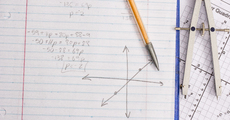
Applied Mathematics
$396.00
Duration: 9h
Applied Mathematics Basic Skills This comprehensive interactive multimedia training program, consisting of nine individual lessons, trains participants to improve their mathematical skills from whole number operations through algebra, geometry, and statistics. This program emphasizes problem solving skills, using real-life examples from both the work and home environments.
Individual Courses are $49 / Discount applied when purchasing complete Learning Plan.
Included Courses
This lesson reviews the basic concepts of comparing, rounding, adding, subtracting, multiplying, and dividing whole numbers. It also reviews the steps for solving addition, subtraction, multiplication, and division problems. Participants learn about using estimating techniques and the calculator to solve mathematical problems. Participants also learn about a basic problem-solving strategy that can be applied to solve many mathematical problems.
This lesson provides instruction in mathematical operations that require the use of decimals. Participants learn how to read decimal numbers as well as compare their values and round them. Participants also learn how to add, subtract, multiply and divide decimals, both with pencil and paper and with a calculator. The lesson provides many examples of applications at home and at work where knowledge of decimals is essential.
This lesson teaches participants how to add, subtract, multiply, and divide fractions.
In this lesson, participants learn how to draw comparisons between one amount and another. The concepts of percent, percentage, and base are taught and the relationship of these concepts to each other. Participants also learn how to find percent, percentage, and base by using paper and pencil as well as with a calculator. In addition, the lesson explains the concepts of ratio and proportion. This lesson teaches how to identify and construct both a ratio and proportion. Participants also learn how to use proportions to convert measurements from English to metric units.
This lesson introduces the concepts of positive and negative numbers, powers and roots. Participants learn how to use positive and negative numbers in addition, subtraction, multiplication and division. Participants learn common squares and their roots and how to use these to solve problems. In addition, the lesson explains formulas and how to use them. The concepts presented in this lesson are designed to prepare participants for algebra.
This lesson introduces algebra by presenting typical symbols that are used in mathematical expressions. In this lesson, participants learn how to write and solve equations.
This lesson reviews the concepts and basic procedures of recognizing, converting, and solving problems using the English and the metric measurement systems. It introduces strategies that participants can apply to estimate metric and English equivalents as well as solving measurement problems with or without a calculator. In addition, participants learn the process of setting up and solving measurement problems with multiple conversions using unit analysis.
This lesson teaches participants the basics of plane and solid geometry. It also specifically prepares participants to use geometric formulas in solving everyday problems. Topics presented in this lesson include the concepts of perimeter, area, and volume. Each topic introduces the appropriate formulas for determining these measurements of the most common geometric shapes, including squares, rectangles, triangles, cylinders, and spheres.
This lesson provides an introduction to some basic principles of statistics. Emphasis is on statistical functions that are most commonly encountered in the workplace and everyday life. The topics covered include construction and interpretation of charts and graphs. The lesson also explains averages such as mean, median and mode and the appropriate use of each. Finally, the lesson discusses measuring and interpreting variation using the range and standard deviation.

